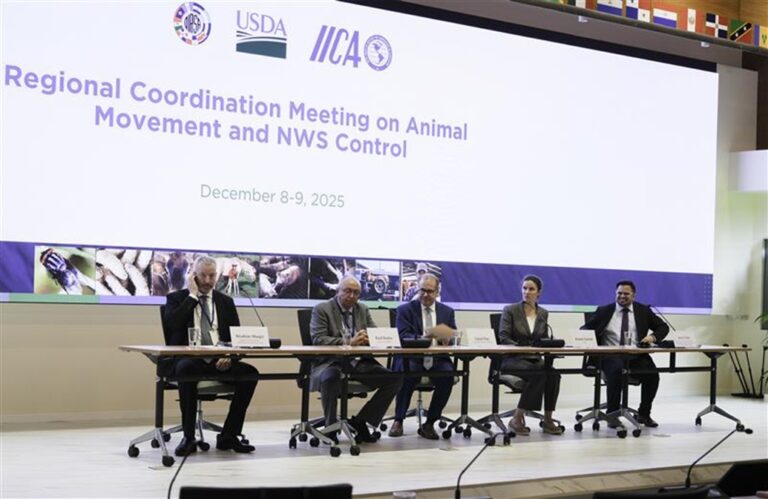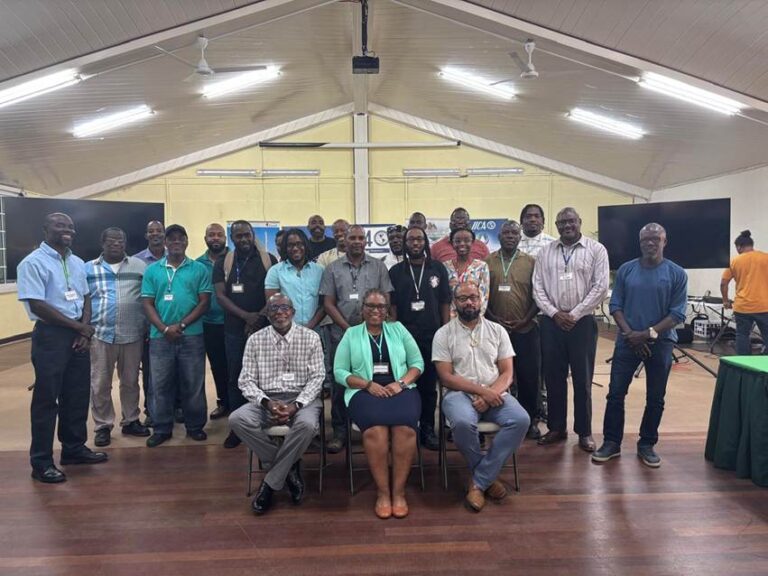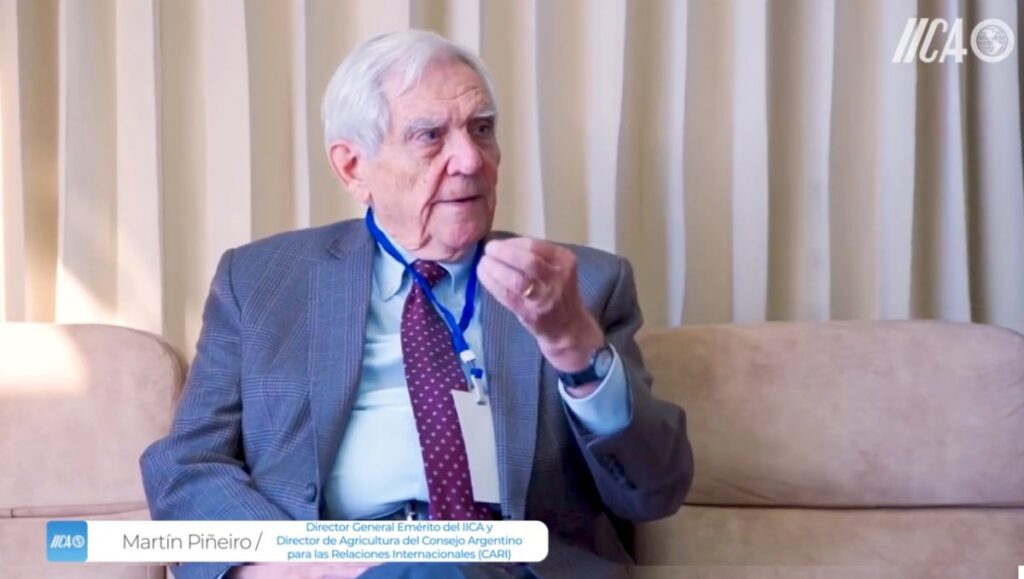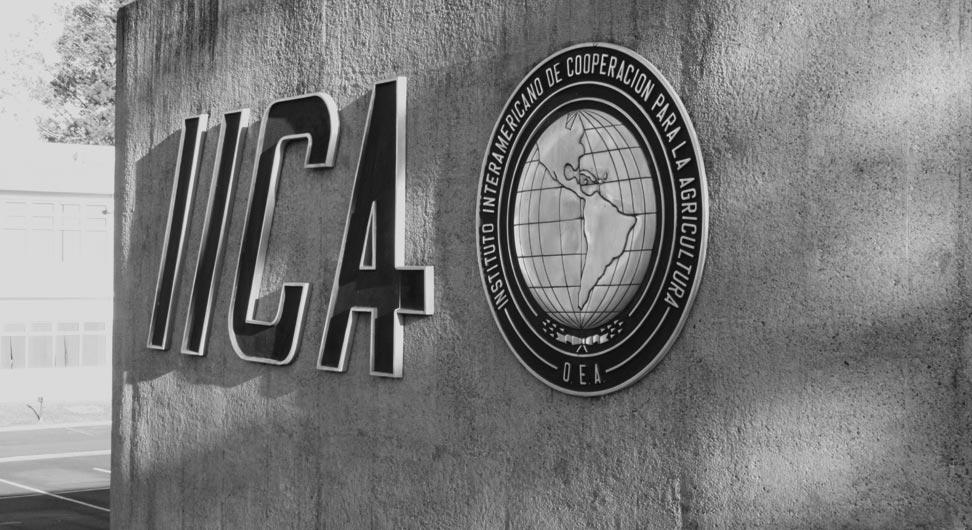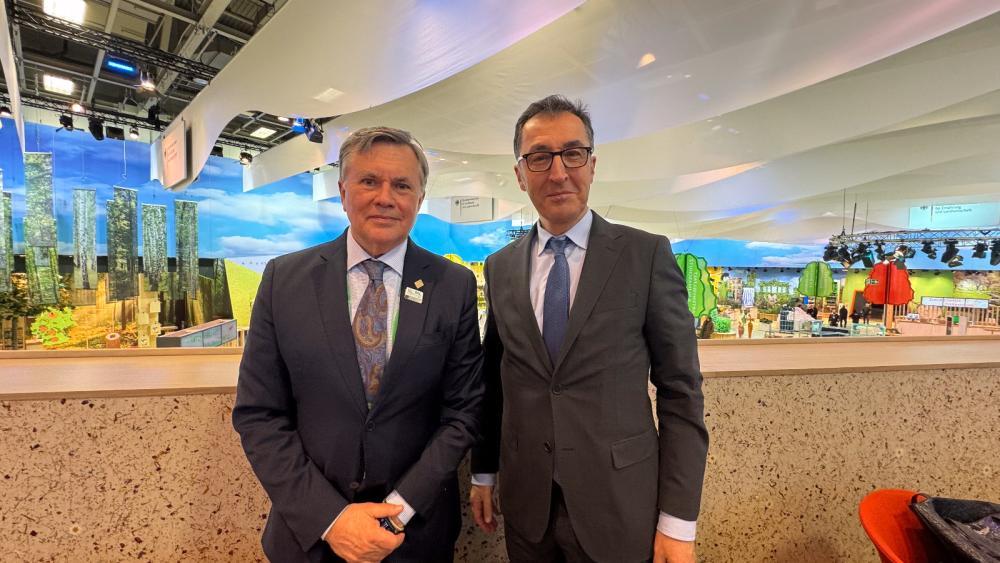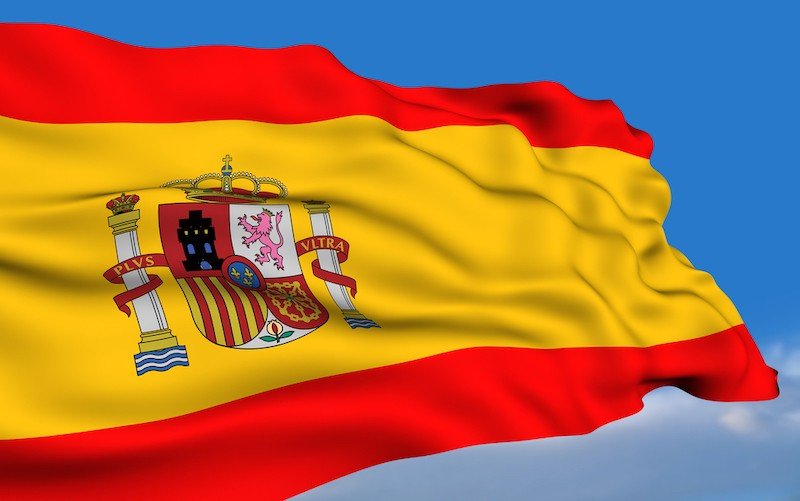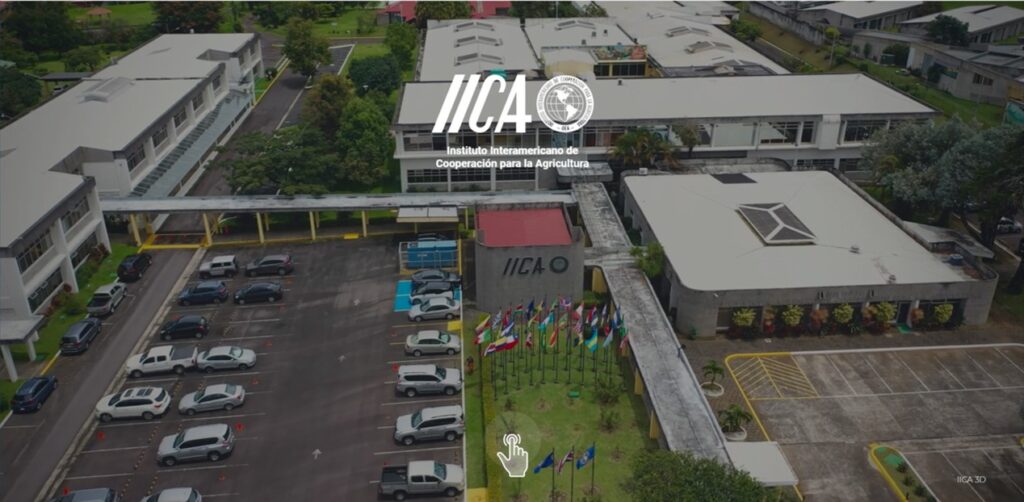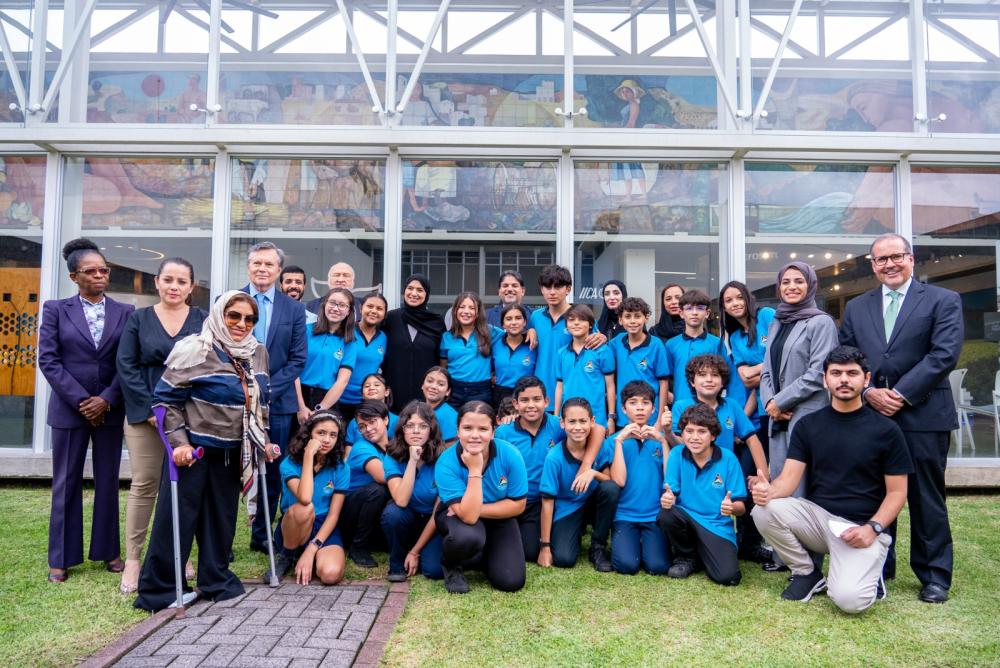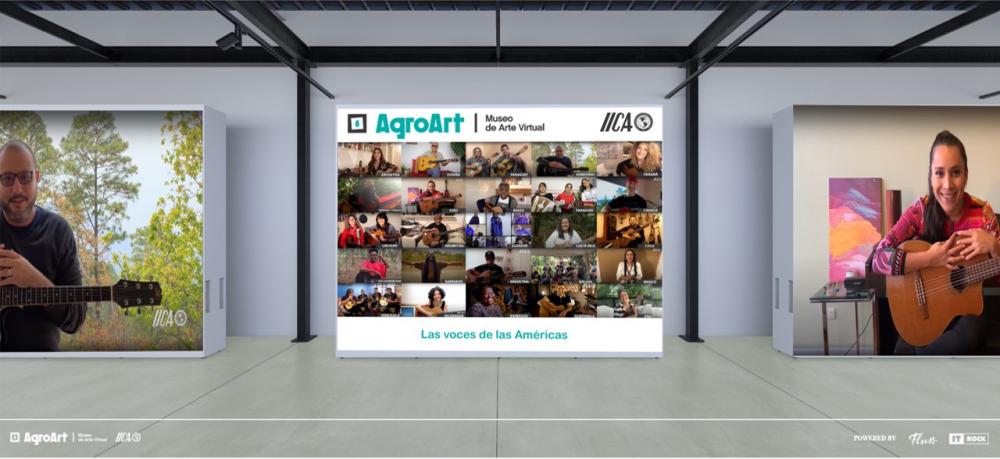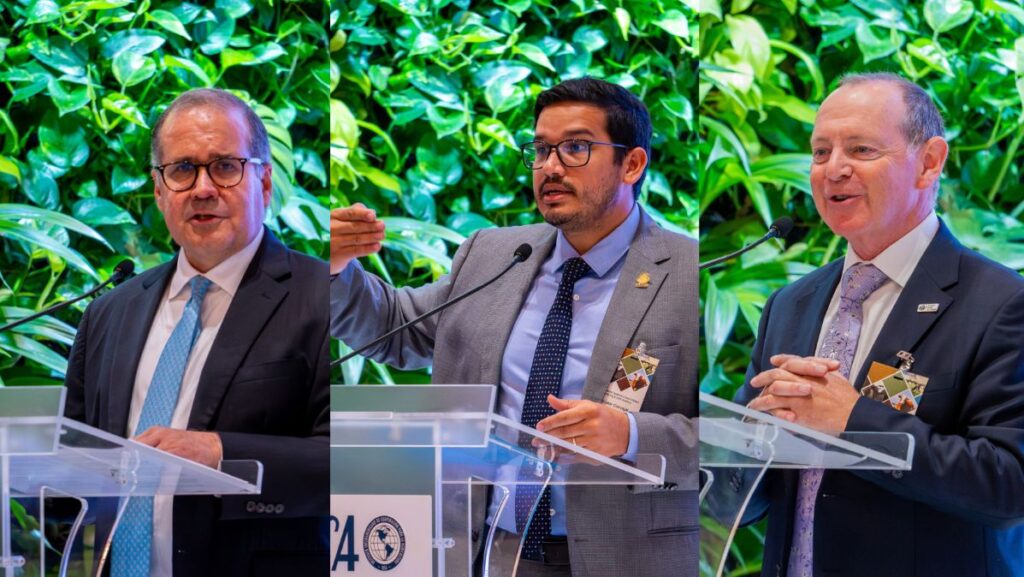
San José, Costa Rica, 1 July 2025 (IICA) – Carbon markets constitute a major opportunity for livestock farming in Latin America and their potential must be developed through collaborative work among governments, the private sector, academia, civil society, and producers, according to the conclusions of a seminar held at the headquarters of the Inter-American Institute for Cooperation on Agriculture (IICA).
The sector’s capacity in the region to sequester carbon in grazing lands contributes to mitigating climate variability and presents an interesting opportunity to attract investments, agreed participants in the event organized by the Global Dairy Platform (GDP), the Global Roundtable for Sustainable Beef (GRSB), and the Pan-American Dairy Federation (FEPALE), along with IICA.
During the seminar, which featured various presentation and discussion panels, participants explored the nature of carbon markets, financing alternatives for carbon capture projects in livestock farming, and the current regional context. They also shared methodologies and ideas to unlock their full potential through concrete steps.
Attendees included officials from agriculture ministries and international organizations, representatives from the private and financial sectors, and members of federations and cooperatives.
The opening session featured remarks by Costa Rica’s Minister of Agriculture and Livestock, Víctor Carvajal; GDP Executive Director, Donald Moore; and IICA Deputy Director General, Lloyd Day.
“Livestock farming contributes to food and nutrition security, generates income for rural communities, empowers women, and provides jobs for youth. We believe there is a great opportunity for livestock producers and for governments through engagement with carbon markets, and our goal is to make that potential a reality,” said Donald Moore.
“To achieve this,” he explained, “we need to work on the policies, science, and financing required. We must focus on regulatory frameworks and the inclusion of family farming. From here, we are urging all stakeholders to collaborate one with the other.”
Carvajal, in turn, shared details of Costa Rica’s recent negotiation with the World Bank for a $140 million results-based loan for investment in the agricultural sector.
“We have included,” he revealed, “several important elements for Costa Rican livestock farming, such as a methodology for effective carbon quantification in soils and a strategy to commercialize this carbon by organizing small-scale farmers. Within four years, we aim to have one thousand livestock farmers receiving payments for environmental services thanks to carbon capture in soils.”
Lloyd Day emphasized the extraordinary value of the livestock sector in general and the dairy sector in particular for the Americas and the world.
“In our region, the livestock and dairy sectors are making significant progress in implementing practices to reduce their environmental impact. And it is crucial for those outside of agriculture to become aware of this. The agricultural sector currently feeds 8 billion people more efficiently than ever, and another 2 billion will be added in the next 25 years,” he stated.
The IICA Deputy Director General noted that around 1.3 billion people worldwide depend on livestock for income. He stressed the need to clearly communicate the sector’s contribution to the three dimensions of sustainability: economic, social, and environmental. “For all these reasons,” he said, “we must work hard to unlock carbon markets for livestock farming in Latin America, which will boost the competitiveness of our producers.”
A priority activity
Latin America has approximately 400 million head of cattle for meat and dairy, nearly half of them in Brazil, explained Ariel Londinsky, Secretary General of FEPALE.
“Livestock is very important and a priority in all our countries, although we face significant heterogeneity. Brazil and Argentina are exporters, while others are net importers, so it’s hard to generalize about Latin America. Still, we produce 23% of the world’s beef, and that figure is growing. In dairy production, we account for 11 to 12% of global output,” Londinsky said.
He noted that there is no single definition or understanding of the concept of “sustainable livestock” in the region, and that developing regional indicators and targets remains an outstanding task. He also stressed the need to advance a regional communication strategy to defend and promote good livestock practices widely implemented across the continent, especially in the global arena.
Martín Fraguío, an expert with the Southern Agricultural Producers Group (GPS)—a network of agricultural institutions from Argentina, Brazil, Paraguay, and Uruguay—explained how carbon markets regulated under Article 6 of the Paris Agreement work. He stated that the key strategic challenge in business decision-making is to stop investing in unviable assets and to shift investment toward those with a future.
He underscored the central role of nature-based solutions in meeting the goals of the Paris Agreement and highlighted the major opportunity for the agricultural sector as the only productive sector capable of becoming a major carbon sink.
However, he warned about the extraordinary scale of investment needed to transform production systems to meet Paris mitigation targets: between $130 and $250 trillion by 2050, with carbon markets accounting for 5 to 10% of that total.
“Carbon markets are key to ensuring that negative externalities have a cost and positive externalities generate income. We must create the resources and capabilities for livestock producers to monetize their good practices,” he concluded.
Jay Waldvogel, Strategic Advisor at GDP, noted that there are already many successful examples around the world and in the region, and that these programs need to be scaled up. In this regard, he explained that the potential size of the carbon market in Latin America ranges from 25 to 60 million tons of CO2 equivalent, which could represent over $6 billion by 2030.
“This is a major opportunity,” he concluded, “and we can seize it if we understand the scale of the issue. There is demand for carbon credits, and livestock farming has the solution, but investment is needed to make it happen.”
More information:
Institutional Communication Division.
comunicacion.institucional@iica.int

